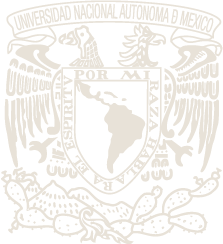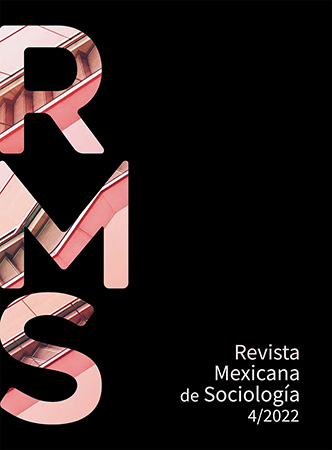Escuchar y narrar la guerra: experiencias emocionales de periodistas colombianos
Contenido principal del artículo
Resumen
Este artículo analiza las formas de gestión emocional de periodistas que han cubierto el conflicto armado colombiano. El texto discute, a partir de una aproximación crítica a los estudios psicodiagnósticos —herederos de la noción de trastorno de estrés postraumático—, los modos de implicación de los periodistas en los contextos de guerra, dolor y sufrimiento, y los repertorios desplegados para gestionar emocionalmente los impactos del conflicto en sus propias vidas y para narrarlos con pudor y dignidad.
Descargas
Detalles del artículo

Revista Mexicana de Sociología por Universidad Nacional Autónoma de México se distribuye bajo una Licencia Creative Commons Atribución-NoComercial-SinDerivar 4.0 Internacional. Basada en una obra en http://revistamexicanadesociologia.unam.mx/index.php/rms/.
Citas
Alexander, Jeffrey C. (2012). Trauma: A Social Theory. Cambridge: Polity Press. Améry, Jean (1980). At the Mind’s Limits: Contemplations by a Survivor on Auschwitz and its Realities. Bloomington: Indiana University Press.
Aoki, Yuta, Estelle Malcolm, Sosei Yamaguchi, Graham Thornicrof y Claire Henderson (2012). “Mental illness among journalists: A systematic review”. International Journal of Social Psychiatry 59: 377-390.
Aranguren-Romero, Juan Pablo (2017). “Efectividad del daño y desdibujamiento del sujeto”. Revista de Estudios Sociales 60: 62-71.
Aranguren-Romero, Juan Pablo, y Juan Roberto Rengifo (2021). “Daño intergeneracional y transmisión: aportes para su reflexión en Colombia”. Policy Brief-Línea Azul-Instituto Capaz 5: 1-16
Arnold, Debora, Lawrence G. Calhoun, Richard Tedeschi y Arnie Cann (2005). “Vicarious posttraumatic growth in psychotherapy”. Journal of Humanistic Psychology 45: 239-263.
Batson, Daniel (1998). “Altruism and prosocial behavior”. En The Handbook of Social Psychology, coordinado por Susan T. Fiske, Daniel T. Gilbert y Lindzey Gardner, 282-316. Nueva York: McGraw-Hill.
Blanco, Amalio, y Darío Díaz (2004). “Bienestar social y trauma psicosocial: una visión alternativa al trastorno de estrés postraumático”. Clínica y Salud 15 (3): 227-252.
Buchanan, Maria, y Patrice Keats (2011). “Coping with traumatic stress in journalism: A critical ethnographic study”. International Journal of Psychology 46: 127-135.
Butler, Judith (2009). Frames of War: When is Life Grievable? Nueva York: Verso. Centro Nacional de Memoria Histórica (CNMH) (2015). La palabra y el silencio. La violencia contra los periodistas en Colombia (1977-2015). Bogotá: CNMH.
Certeau, Michel de (2007). La invención de lo cotidiano. 1. Artes de hacer. México: Universidad Iberoamericana/Instituto Tecnológico y de Estudios Superiores de Occidente.
Dworznik, Gretchen (2006). “Journalism and trauma: How reporters and photographers make sense of what they see”. Journalism Studies 7 (4): 534-553.
Erikson, Kai (1995). “Notes on trauma and community”. En Trauma: Explorations in Memory, coordinado por Cathy Caruth, 183-199. Baltimore: The Johns Hopkins University Press.
Fassin, Didier, y Richard Rechtman (2009). The Empire of Trauma: An Inquiry into the Condition of Victimhood. New Jersey: Princeton University Press.
Feinstein, Anthony (2006). Journalists Under Fire: The Psychological Hazards of Covering War. Baltimore: The Johns Hopkins University Press.
Feinstein, Anthony, y Dawn Nicolson (2005). “Embedded journalists in the Irak war: Are they at greater psychological risk?” Journal of Traumatic Stress 18: 129-132.
Feinstein, Anthony, John Owen y Nancy Blair (2002). “A hazardous profession: War, journalists, and psychopathology”. The American Journal of Psychiatry 159 (9): 1570-1575.
Figley, Charles (1995). “Compassion fatigue as secondary traumatic stress disorder: An overview”. En Compassion Fatigue: Coping with Secondary Traumatic Stress
Disorder in Those Who Treat the Traumatized, coordinado por Charles R. Figley, 1-20. Nueva York: Brunner/Mazel.
Figley, Charles (2002). “Compassion fatigue: Psychotherapists’ chronic lack of self care”. jclp/in session: Psychotherapy in Practice 58 (11): 1433-1441.
Freud, Sigmund ([1905] 1953). “On psychotherapy (1905 [1904])”. The Standard Edition of the Complete Psychological Works of Sigmund Freud, Volume VII (1901-
: A Case of Hysteria, Three Essays on Sexuality and Other Works, 255-268. Londres: Hogarth Press.
Freud, Sigmund ([1915] 1953). “Observations on transference-love”. En The Standard Edition of the Complete Psychological Works of Sigmund Freud, Volume XII, 159-171. Londres: Hogarth Press.
Freud, Sigmund ([1910] 1996). “Las perspectivas futuras de la terapia psicoanalítica”. En Obras completas, vol. XI. Buenos Aires: Amorrortu.
Freud, Sigmund ([1912] 1996). “Sobre la dinámica de la trasferencia”. En Obras completas, vol. XII. Buenos Aires: Amorrortu.
Freud, Sigmund ([1905] 2012). “Psicoterapia. Tratamiento por el espíritu”. En Obras completas de Sigmund Freud, vol. II, 1014-1027. Buenos Aires: Siglo XXI Editores.
Gabbard, Glen (2001). “A contemporary psychoanalytic model of countertransference”. Journal of Clinical Psychology 57: 983-991.
Gatti, Gabriel (2014). Surviving Forced Disappearance in Argentina and Uruguay. Identity and Meaning. Nueva York: Palgrave Macmillan.
Gergen, Kenneth (2006). Construir la realidad. El futuro de la psicoterapia. Barcelona: Paidós.
Hernández, Pilar (2011) “Altruism born of suffering: How Colombian human rights activists transform pain into prosocial action”. Journal of Humanistic Psychology 51 (2): 229-249.
Hernández, Pilar, David Gangsei y David Engstrom (2007). “Vicarious resilience: A new concept in work with those who survive trauma”. Family Process 46 (2): 229-241.
Hight, Joe, y Frank Smyth (2003). “Tragedies and journalists: A guide for more effective coverage”. Dart Center for Journalism and Trauma. Disponible en https://dartcenter.org/sites/default/files/en_tnj_0.pdf
Himmelstein, Hal, y Eleanor P. Faithorn (2002). “Eyewitness to disaster: How journalistscope with the psychological stress inherent in reporting traumatic events”. Journalism Studies 3 (4): 537-555.
Keats, Patrice (2005). “Vicarious witnessing in European concentration camps: Imagining the trauma of another”. Traumatology 11: 171-187.
Keats, Patrice (2010). “The moment is frozen in time: Photojournalists’ metaphors in describing trauma photography”. Journal of Constructivist Psychology 23: 231-255.
Lagerquist, Peter (2009). “Shooting Gaza: Photographers, photographs, and the unbearable lightness of war”. Journal of Palestine Studies 38 (3): 86-92.
Lira, Elizabeth (2010). “Trauma, duelo, reparación y memoria”. Revista de Estudios Sociales 36: 14-28.
Massé, Mark (2011). Trauma Journalism: On Deadline in Harm’s Way. Nueva York: Continuum International Publishing Group.
McCann, Lisa, y Laurie Anne Pearlman (1990). “Vicarious traumatization: A framework for understanding the psychological effects of working with victims”. Journal of Traumatic Stress 3: 131-149.
Newman, Elana, Roger Simpson y David Handschuh (2003). “Trauma exposure and posttraumatic stress disorder among photojournalists”. Visual Communication Quarterly 10: 4-13.
Ochberg, Frank (1996). “A primer on covering victims”. Nieman Reports 50: 21-26.Ricchiardi, Sherry (1999). “Confronting the horror”. American Journalism Review. Disponible en http://ajrarchive.org/article.asp?id=825.
Richard, Nely (2000). La insubordinación de los signos: cambio político, transformaciones culturales y poéticas de la crisis. Santiago: Cuarto Propio.
Smith, River, Elana Newman, Susan Drevo y Autumn Slaughter (2015). “Covering trauma: Impact on journalists”. Dart Center for Journalism and Trauma. Disponible en https://dartcenter.org/content/covering-trauma-impact-on-journalists.
Staub, Ervin, y Johanna Vollhardt (2008). “Altruism born of suffering: The roots of caring and helping after victimization and other trauma”. American Journal of Orthopsychiatry 78: 267-280.
Tedeschi, Richard, y Lawrence Calhoun (2004). “Posttraumatic growth: Conceptual foundations and empirical evidence”. Psychological Inquiry 15: 1-18.
unesco (2019). Intensified Attacks, New Defences. Developments in the Fight to Protect Journalists and End Impunity. Disponible en https://unesdoc.unesco.org/ark:/48223/pf0000371343.
Viñar, Marcelo (1995). “La memoria y el porvenir. El impacto del terror político en la mente y la memoria colectiva”. Uruguay: cuentas pendientes. Dictadura, memorias y desmemorias, compilado por Álvaro Rico, 51-63. Montevideo: Trilce.
White, Haiden (1992). “Historical emplotment and the problem of truth”. En Probing the Limits of Representation: Nazism and the “Final Solution”, coordinado por Saul Friedländer. Cambridge: Harvard University Press.


